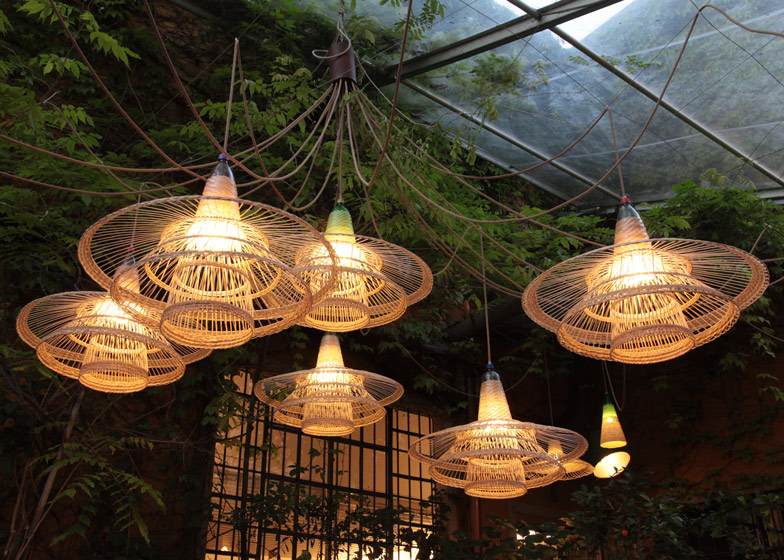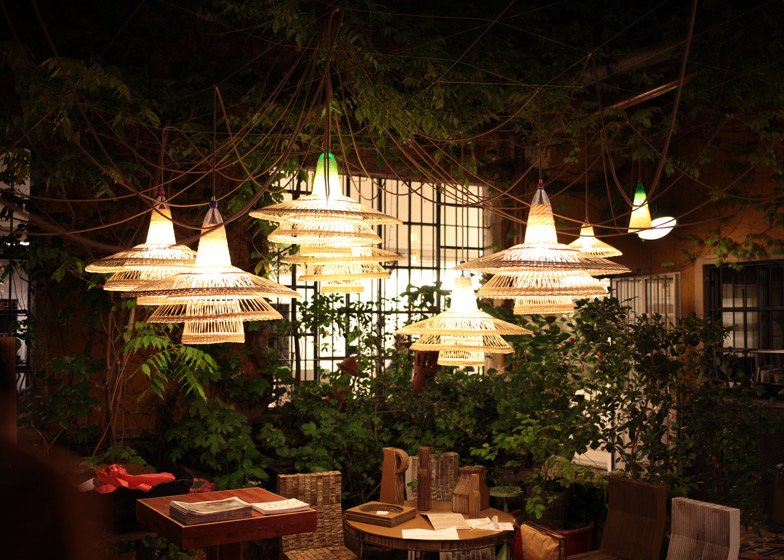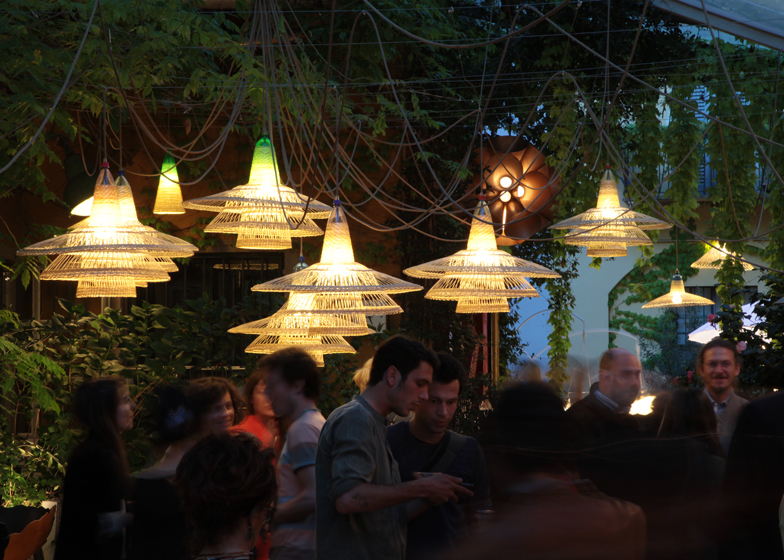Milan 2014: designer Alvaro Catalan de Ocon has created a range of wicker lamp shades woven with old plastic bottles by artisans in Chile for his PET Lamps project (+ slideshow).
Alvaro Catalan de Ocon and the PET Lamps team combined reused plastic bottles with traditional craft to create a second range of lighting called Chimbarongo, which hung from vines in the courtyard of Spazio Rossana Orlandi for Milan design week.
Named after the Chilean city close to Santiago in which the craftspeople who made them live and work, the lamps combine strips of recycled plastic bottles with local artisanal wicker weaving skills.
"The whole city is involved in working with wicker," said Catalan de Ocon. "They normally do traditional and not very nice things but we went there and worked together for one month."
Discarded plastic drinks bottles are adapted by chopping off the bottoms, then cutting the sides into thin strips up to the neck.
These strips are then woven with the wicker to form the lamp shades, mixing the coloured plastic with natural fibres to create patterns.
The idea was based on traditional Japanese stirrers made from bamboo in a similar way, said Catalan de Ocon.
"We got the inspiration from a Japanese bamboo piece from the tea ceremony," he explained.
The old bottle necks provide structure and support for the lightweight material. A bulb is suspended below the neck and the electrical cord threads through the top.
The PET Lamp project originally began as a collaboration with weavers in Colombia, who created the first lamp collections that have simpler shapes but use more colours and patterns in the design of the shades.
"It's the same concept but the result is quite different," said Catalan de Ocon. "It is always dependent on the local craftsmanship."
The Chimbarongo range has a loose weave and some feature two or three woven tiers, using the wicker in its natural hue.
"We decided to keep the original colour because they never tint it," Catalan de Ocon explained.
The lights are available as sets, which can be strung up together from a single source, or as individual lamps.
Following the project's debut at Spazio Rossana Orlandi in 2013, the new collection was on display in the gallerist's courtyard for Milan design week earlier this month.




